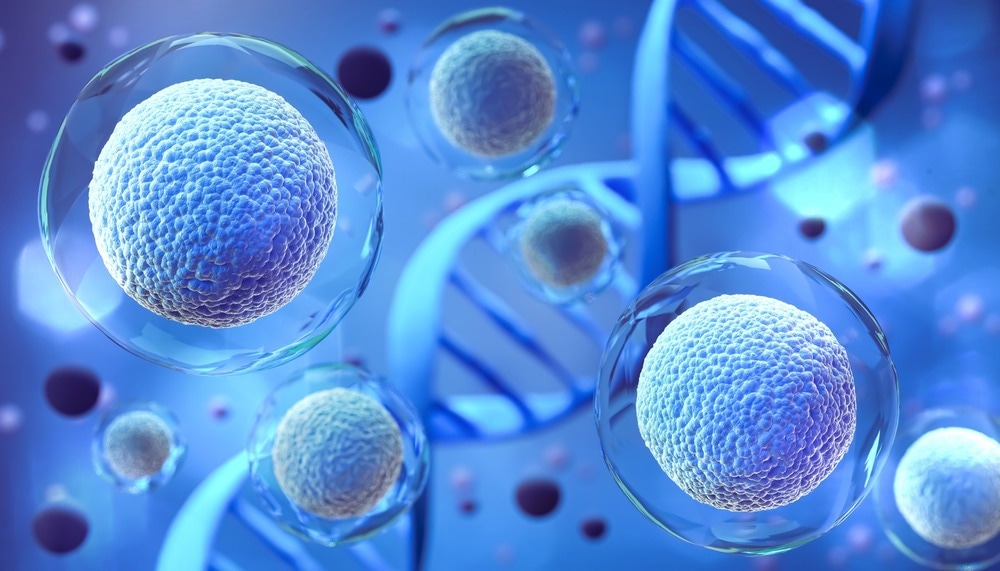Reviewed by Danielle Ellis, B.Sc.Oct 13 2023
Apoptosis, frequently described as programmed cell death, is a fundamental mechanism essential for the growth and development of multicellular organisms. Notably, this process, or a rudimentary version of it, is also observed in single-celled eukaryotes such as yeast and other microeukaryotes, which are often referred to as protists.

Image Credit: Anusorn Nakdee/Shutterstock.com
The origins of eukaryotic apoptosis continue to be a subject of inquiry in the field of biology. Nonetheless, research has highlighted that numerous factors responsible for initiating apoptosis have roots in bacteria or mitochondria, offering insights into the evolutionary history of this widely observed phenomenon.
In a recent study published in Genome Biology and Evolution, researchers from the Institute of Biochemistry and Biophysics of the Polish Academy of Sciences have unveiled that many of these apoptotic factors may have originated during the period of mitochondrial incorporation, indicating a remarkable level of conservation that spans approximately 1.8 billion years.
The processes that trigger apoptosis exhibit remarkable similarities across various diverse eukaryotes. These processes typically commence with an increase in mitochondrial membrane permeability, which sets off a series of events involving proteins known as apoptosis-inducing factors (AIFs).
These AIFs play a crucial role in initiating the pathway that ultimately leads to cell death. According to phylogenetic analyses, it is been observed that these AIFs generally have origins in bacteria or mitochondria.
To gain further insights into the evolution of apoptosis in different eukaryotes, a research team led by Szymon Kaczanowski and Urszula Zielenkiewicz conducted experiments to investigate the functional conservation of apoptotic factors.
They used a yeast complementation test, where they replaced each of the four apoptotic genes in yeast with related proteins from various eukaryotes and prokaryotes. Subsequently, they exposed the modified yeast strains to apoptosis-inducing agents to assess whether the introduced genes retained the capacity to induce apoptosis in yeast.
Remarkably, the study uncovered those proteins from distantly related sources, including plants, animals, slime molds, and bacteria, could effectively replace the original yeast proteins in their functional roles.
“This surprising finding suggests that ancient mechanisms of cell death have been evolutionarily conserved since the domestication of mitochondria,” says Kaczanowski and Zielenkiewicz, an event that took place around 1.8 billion years ago.
The study's results reinforce the endosymbiotic origin hypothesis of apoptosis, initially proposed by Guido Kroemer in 1997. Kroemer postulated that the bacterial ancestors of mitochondria generated both toxins (apoptotic factors) and antitoxins (anti-apoptotic factors).
In this context, the antitoxins functioned as "addiction molecules," securing the survival of the symbiotic relationship. Driven by the evolutionary tension between bacterial endosymbionts and their hosts, the toxins eventually transformed into the apoptotic factors now identified.
Kaczanowski and Zielenkiewicz propose an alternative evolutionary scenario for apoptosis. They suggest that early protoeukaryotes were predators that preyed on bacteria. In response to this predation, the bacteria developed toxins as a defense mechanism.
As time passed, these bacteria were domesticated to become mitochondria within eukaryotic cells, and their toxins evolved into apoptotic factors. The diverse families of AIFs found today and their scattered presence across distantly related eukaryotes imply the existence of multiple redundant toxins in the protomitochondria. This points to a coevolutionary arms race between protomitochondria and their protoeukaryotic hosts.
Whether apoptosis has its roots in an endosymbiotic toxin/antitoxin system or a predator/prey relationship, the study's results indicate that the delicate equilibrium between life and death in eukaryotic cells is profoundly intertwined with the emergence of mitochondria.
This discovery paves the way for new avenues of research into the coevolution of mitochondria and eukaryotes, as well as the ancient origins of cell death mechanisms. Moreover, a similar investigative approach could be employed to examine other age-old cellular processes beyond programmed cell death and explore the extent to which conflicts among cellular partners have influenced the evolution of genome characteristics.
“Future studies may reveal the evolutionary history of other aging mechanisms and could make a significant contribution to aging studies,” noted Kaczanowski and Zielenkiewicz, stressing the wider implications of their research.
Source:
Journal reference:
Kaushal, V., et al. (2023). Apoptotic factors are evolutionarily conserved since mitochondrial domestication. Genome Biology and Evolution. doi.org/10.1093/gbe/evad154.